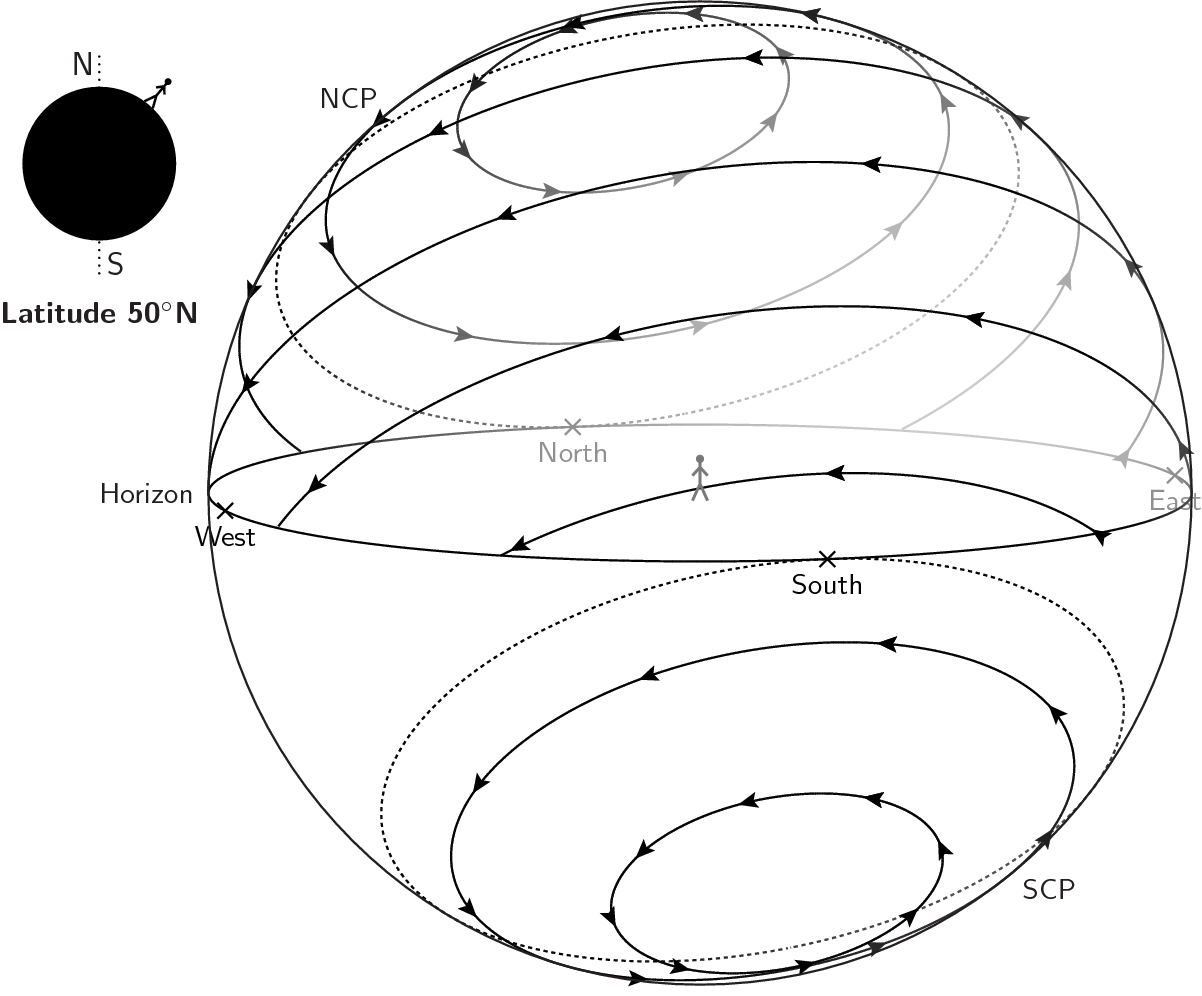Sidereal Time
Local sidereal time is a system of time keeping which measures time by the right ascension of stars which lie on the observer's meridian.
As the night sky rotates around the celestial poles (labelled NCP and SCP in the diagram to the right), objects rise above the eastern horizon, and set along the western horizon. They appear highest in the sky at the midpoint between setting and rising, when they cross the north-south line across the observer's sky. Specifically, this line is the great circle passing through the points due north and south on the observer's horizon, and through the zenith.
This line is called the observer's meridian, and objects which lie on it are said to culminate.
As the night sky turns, stars cross this line once every 23 hours and 56 minutes, once every sidereal day.
The right ascension of the stars that are culminating at any given moment is thus a useful measure of what objects are visible at any given time, and is termed the observer's local sidereal time.
